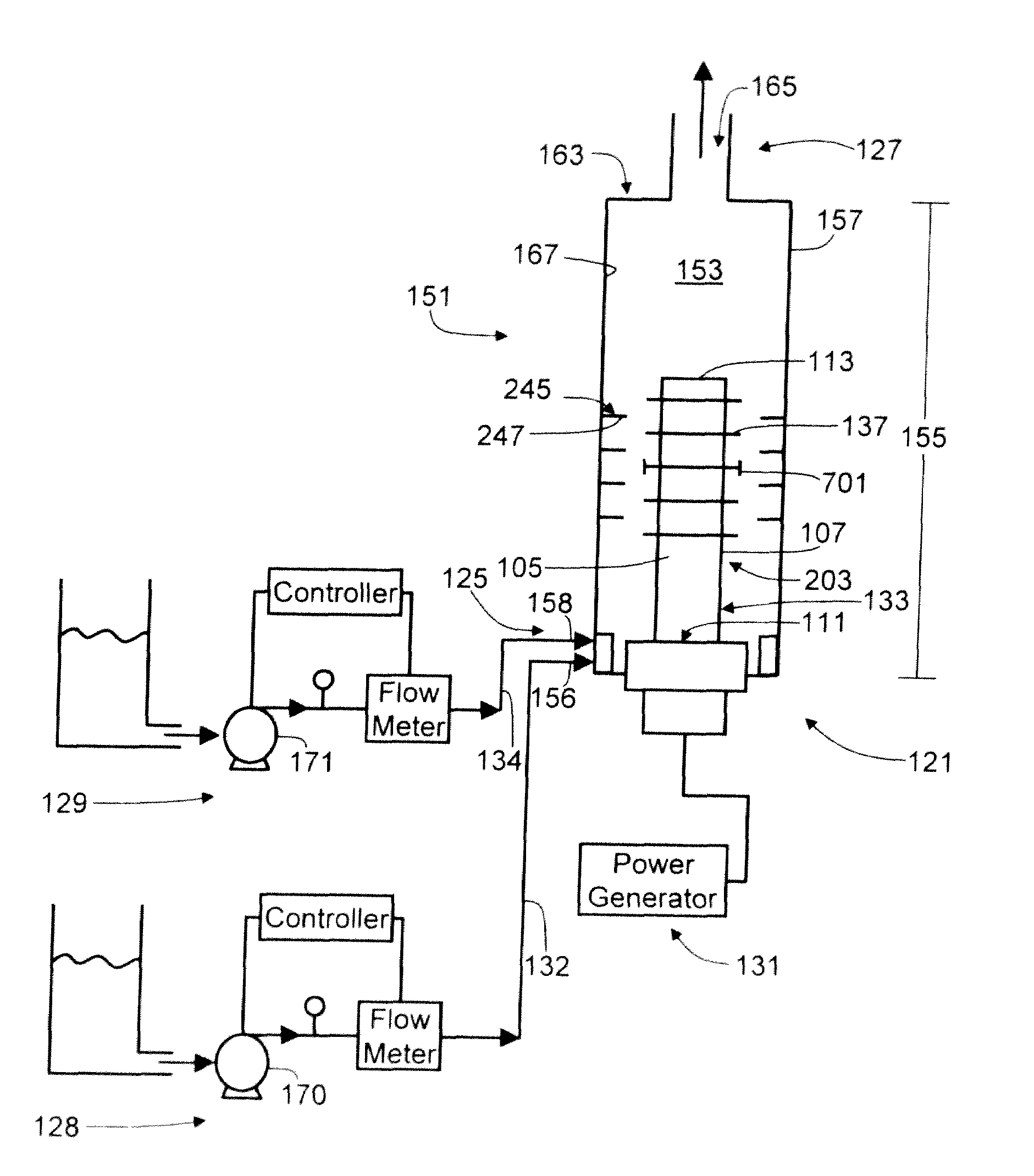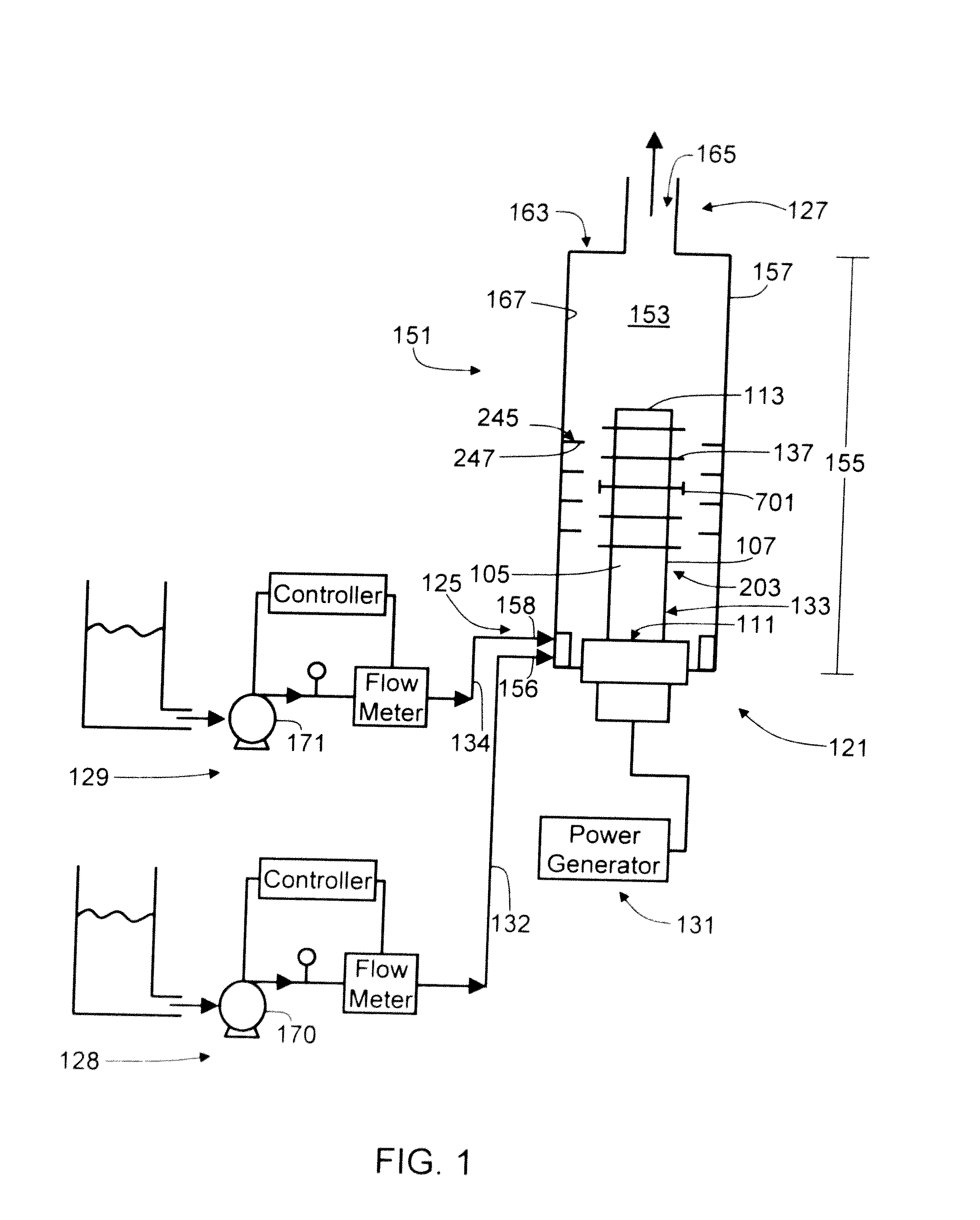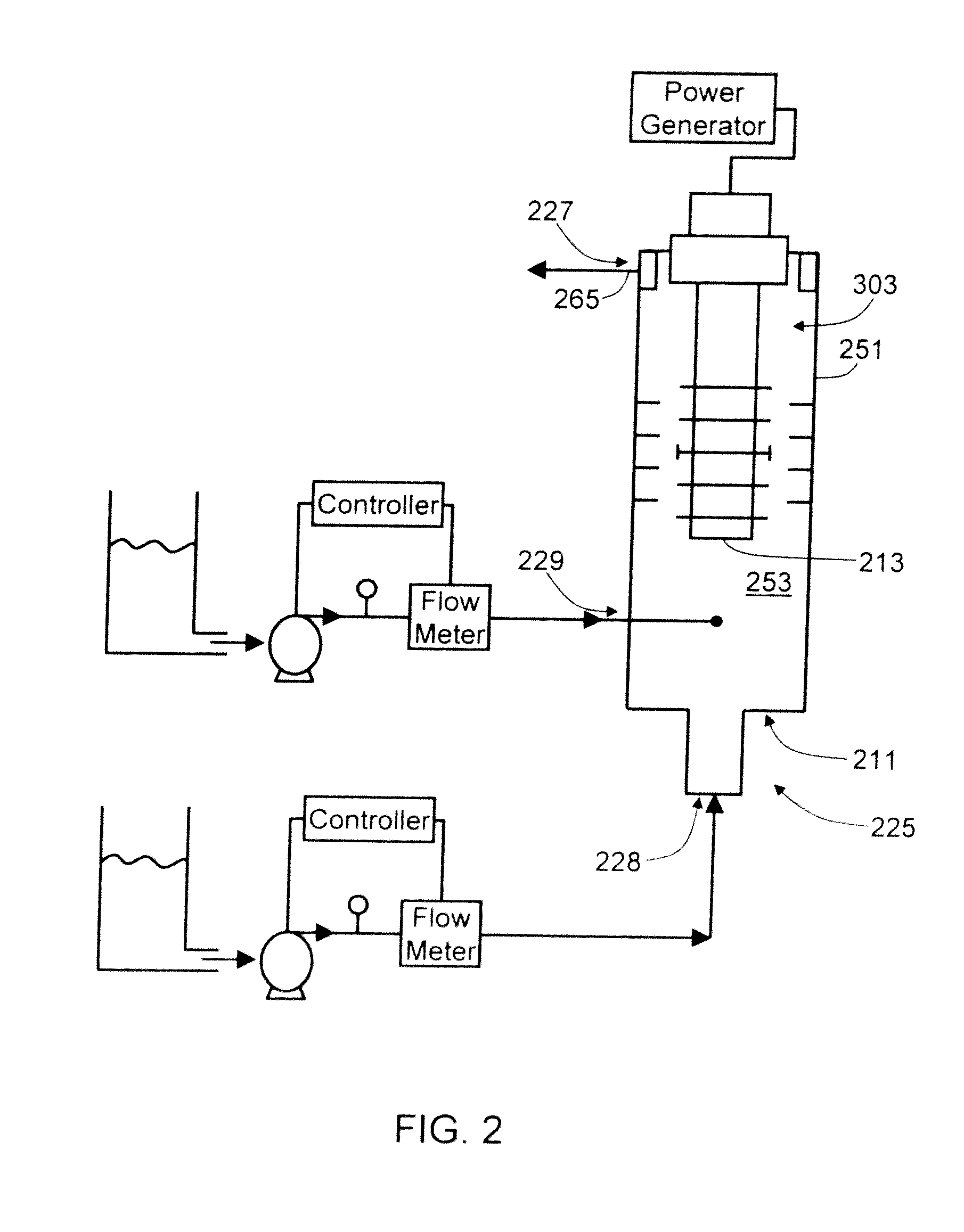Ultrasonic Treatment Chamber for Preparing Emulsions
a technology of ultrasonic treatment chamber and emulsion, which is applied in the direction of mixing, transportation and packaging, chemical/physical/physicochemical processes, etc., can solve the problems of human error, time, energy and money, and the conventional method of mixing phases into emulsions have several problems,
- Summary
- Abstract
- Description
- Claims
- Application Information
AI Technical Summary
Benefits of technology
Problems solved by technology
Method used
Image
Examples
example 1
[0111]In this Example, the ability of the ultrasonic mixing system of the present disclosure to mix an oil phase and aqueous liquid phase to form an oil-in-water type emulsion was analyzed. Specifically, the ability of the ultrasonic mixing system to mix dispersions of mineral oil into a diluted wet wipes solution was analyzed.
[0112]The diluted wet wipe solution included 4.153% (by weight) KIMSPEC AVE® (commercially available from Rhodia, Inc., Cranbury, N.J.) and 95.848% (by weight) purified water. The solution was prepared by mixing the KIMSPEC AVE® into water using a propeller mixer, available from IKA® EUROSTAR, IKA Works Co., Wilmington, N.C.), rotating at a speed of about 540 revolutions per minute (rpm). Four separate samples of the diluted wet wipe solution were prepared. The solution for each sample was delivered to a first inlet port of the ultrasonic mixing system of FIG. 1.
[0113]Additionally, a flow of mineral oil, available as Penreco® Drakeol® LT mineral oil N.F. from ...
example 2
[0117]In this Example, the ultrasonic mixing system of the present disclosure was used to emulsify an oil phase into a water phase to produce an oil-in-water emulsion. The ability of the ultrasonic mixing system to prepare a stable oil-in-water emulsion was analyzed and compared to an oil-in-water emulsion prepared using a traditional cold mix procedure as described above.
[0118]Three oil-in-water emulsions were prepared. Specifically, the oil-in-water emulsions were prepared by mixing 1 part mineral oil (available as Penreco® Drakeol® LT mineral oil N.F. from Penreco Co., The Woodlands, Tex.)) to 199 parts water for a mixing period of approximately 2 minutes. The first emulsion sample (Sample 1) was prepared using a propeller mixer (IKA® EUROSTAR, IKA Works, Co., Wilmington, N.C.) and using the standard cold mix batch procedure.
[0119]The other two oil-in-water emulsions (Samples 2 and 3) were prepared in the ultrasonic mixing system of FIG. 1. Specifically, to produce the oil-in-wat...
example 3
[0123]In this Example, the ultrasonic mixing system of the present disclosure was used to emulsify an oil phase into a salt-containing water phase to produce an oil-in-water emulsion. The ability of the ultrasonic mixing system to prepare a stable oil-in-water emulsion having a salt content of at least 1% was analyzed.
[0124]A preserved saltwater solution was prepared by mixing the ingredients and amounts of ingredients described in Table 4. The ingredients were mixed using a stirbar or paddle mixer until a solution was formed.
TABLE 4Amount inTrade Name andgrams (g) to(Companymake a 6000 gAvailable From)INCI Name%batchDeionized Water97.465847.6CULINOX 999Sodium Chloride2120(Cargill)PUROX S (DSM)Sodium Benzoate0.4527NEOLONE 950Methylisothiazolinone0.095.4(Dow)
[0125]Salt-containing emulsion #1 was formed using the ultrasonic mixing system shown in FIG. 1 by adding 90 grams of Butyrospermum Parkii (Shea) Butter (available as LIPEX 205 from AAK; 5%) and 22.5 grams of Polysilicone-20 (ava...
PUM
| Property | Measurement | Unit |
|---|---|---|
| temperature | aaaaa | aaaaa |
| frequency | aaaaa | aaaaa |
| frequency | aaaaa | aaaaa |
Abstract
Description
Claims
Application Information
 Login to View More
Login to View More - R&D
- Intellectual Property
- Life Sciences
- Materials
- Tech Scout
- Unparalleled Data Quality
- Higher Quality Content
- 60% Fewer Hallucinations
Browse by: Latest US Patents, China's latest patents, Technical Efficacy Thesaurus, Application Domain, Technology Topic, Popular Technical Reports.
© 2025 PatSnap. All rights reserved.Legal|Privacy policy|Modern Slavery Act Transparency Statement|Sitemap|About US| Contact US: help@patsnap.com



